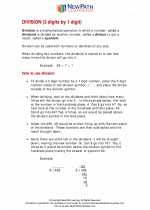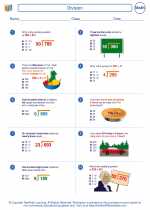Surface Area
Surface area is the total area that the surface of a three-dimensional object occupies. It is the sum of the areas of all the faces of the object. Surface area is an important concept in geometry and is used to calculate the amount of material needed to cover or wrap an object, such as paint for a wall or wrapping paper for a gift box.
Formulas for Calculating Surface Area
There are different formulas for calculating the surface area of different three-dimensional shapes:
- Cube: The surface area of a cube is given by the formula: 6 * (side length)^2.
- Rectangular Prism: The surface area of a rectangular prism is the sum of the areas of its six faces: 2 * (length * width + width * height + height * length).
- Cylinder: The surface area of a cylinder is the sum of the areas of its two circular bases and its lateral surface area: 2 * π * r^2 + 2 * π * r * h, where r is the radius of the base and h is the height of the cylinder.
- Sphere: The surface area of a sphere is given by the formula: 4 * π * r^2, where r is the radius of the sphere.
- Cone: The surface area of a cone is the sum of the area of its base and its lateral surface area: π * r^2 + π * r * l, where r is the radius of the base and l is the slant height of the cone.
Example Problems
Let's solve some example problems to understand how to calculate surface area:
- Find the surface area of a cube with a side length of 5 units.
- Calculate the surface area of a cylinder with a radius of 3 units and a height of 8 units.
Using the formula for the surface area of a cube: 6 * (side length)^2, the surface area is 6 * (5)^2 = 6 * 25 = 150 square units.
Using the formula for the surface area of a cylinder: 2 * π * r^2 + 2 * π * r * h, the surface area is 2 * π * 3^2 + 2 * π * 3 * 8 = 2 * π * 9 + 2 * π * 24 = 18π + 48π = 66π square units.
Study Tips
Here are some tips for studying surface area:
- Understand the formulas for different shapes and practice applying them to solve problems.
- Visualize the objects and their faces to better comprehend how surface area is calculated.
- Work on real-life problems involving surface area, such as calculating the amount of paint needed to cover a wall or the amount of wrapping paper needed for a gift box.
- Practice using different units of measurement (e.g., square units, square inches, square feet) to express surface area.
◂Math Worksheets and Study Guides Sixth Grade. Division

 Worksheet/Answer key
Worksheet/Answer key
 Worksheet/Answer key
Worksheet/Answer key
 Worksheet/Answer key
Worksheet/Answer key
